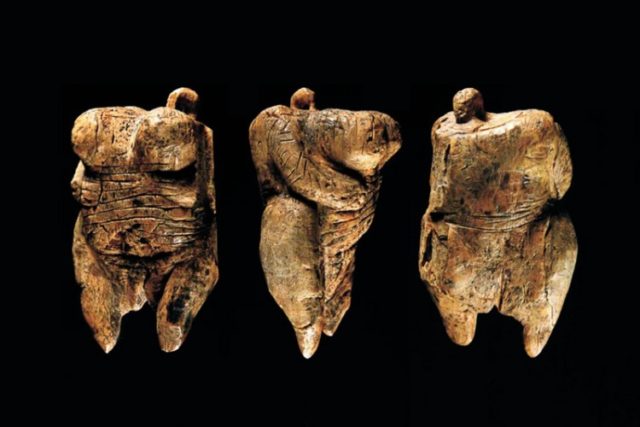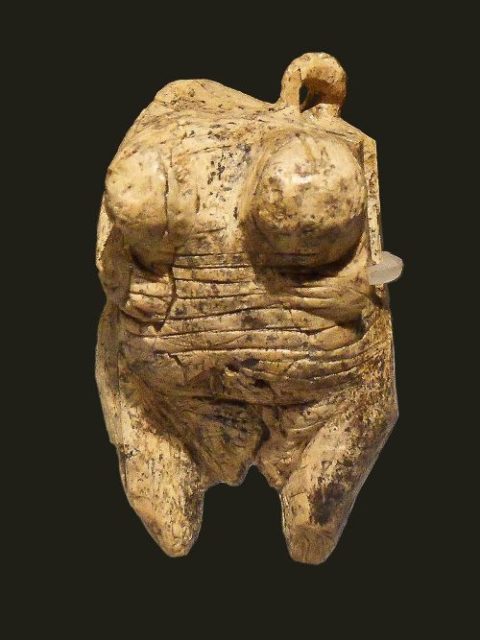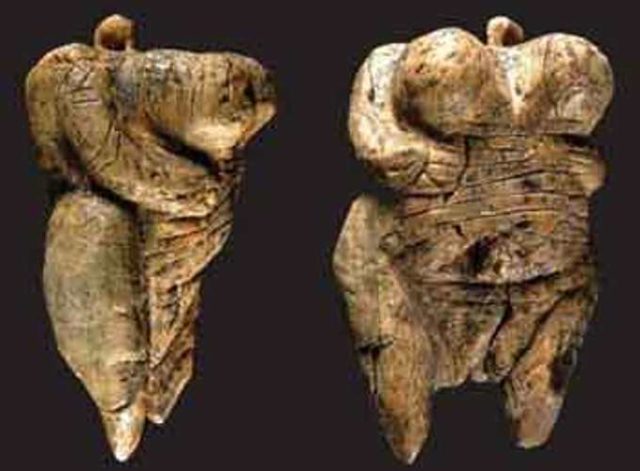Caves in the Swabian Alps in Baden- Württemberg, Germany have been the resting place of many artifacts of the Upper Palaeolithic Period. Around 25 mammoth-ivory figurines and other items have been found.
These include the figure of a lion-headed man, the Lowenmensch, and an ivory flute found at Geißenklösterle. Some of these are as much as 30000 years old.

The most important of these artifacts is perhaps the figurine named the Venus of Hohle Fels. The small sculpture was carved from mammoth ivory and depicts a woman. It was discovered in 2008 in a cave near Schelklingen called Hohle Fels, ‘hollow rock’ in German. It was found 20 metres from the cave wall, next to an ivory flute similar to the one found at Geißenklösterle.
The figurine and flute have been dated from between 35,000 and 40,000 years, making the flute the oldest musical instrument yet discovered. They were discovered by a team from the Universität Tübingen Abteilung Ältere Urgeschichte und Quartärökologie, lead by Nicholas J Conrad.
The Venus of Hohle Fels is significant too in being the oldest known representation of a human being, if we discount the lion-headed man Lowenmensch, which is 40,000 years old.

The Venus comes from the early Aurignacian epoch of the Upper Palaeolithic (Stone Age). Venus figures from the Palaeolithic have been found throughout Europe, but the Hohle Fels is the oldest. It would have been made by Cro-Magnon, the first true humans.
It is believed it would have taken tens, if not hundreds of hours to carve.

The figurine is in fragments, six of which have been recovered.
The left arm and shoulder are missing, and there is no head. Instead, there is a ring allowing it to be worn as an amulet. The breasts are enormous, and Conrad speculates that the Venus was a fertility symbol. He goes further, and suggests that she represents a religious practice.
Anthropologists from Victoria University, Wellington, New Zealand propose that the proportions of the figurine are deliberately exaggerated to express the desire for ‘survival and longevity, within well-nourished and reproductively successful communities’.
In the cave there were also pieces of worked ivory, flint, and remains of animals: woolly mammoths, reindeer, giant cave bears, ibex and wild horses, so the cave would appear to have been an at least temporary settlement.
